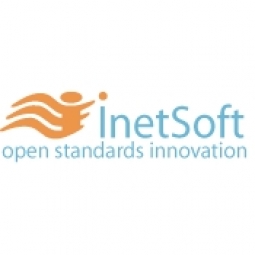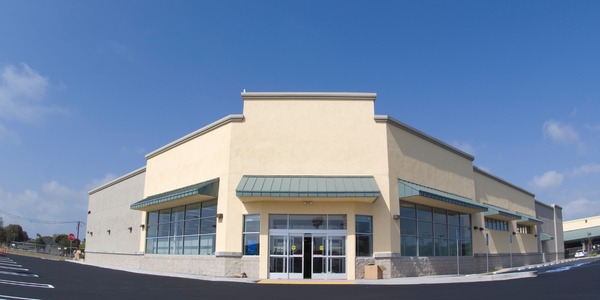Customer Company Size
Mid-size Company
Region
- America
Country
- United States
Product
- InetSoft’s Style Intelligence
Tech Stack
- Data Analytics
- Business Intelligence
Implementation Scale
- Enterprise-wide Deployment
Impact Metrics
- Cost Savings
- Productivity Improvements
Technology Category
- Analytics & Modeling - Real Time Analytics
Applicable Industries
- Apparel
Applicable Functions
- Sales & Marketing
- Business Operation
Use Cases
- Predictive Maintenance
- Supply Chain Visibility
Services
- Data Science Services
About The Customer
T-Formation is a privately owned and operated one-stop shop for apparel production. Founded in 1987, it is ranked as the 3rd largest volume printer in the United States. T-Formation's facilities manage customer orders throughout the production lifecycle to include custom design, development, production, and shipping. The company works with organizations of all sizes and types, from Fortune 500 through non-profits, universities and smaller businesses. T-Formation uses a single database to manage their data, including everything from data entry and sales through production, order management, and shipping.
The Challenge
T-Formation, a large volume printer in the United States, was facing challenges with its in-house order system solution which provided limited reporting functionality. The system handled all sales, general ledger, artwork management, production schedule, statistics, shipping, receiving, and invoicing, but linking this data in a way to identify opportunities was not easy. The traditional form of reporting did not allow decision makers to get to information easily. The organization knew there were areas they were unable to successfully analyze and wanted to implement a tool that would allow business to see – at a glance – whether they were making a profit and how they could manage their contracts more efficiently.
The Solution
To gain broader business visibility, T-Formation downloaded a trial version of InetSoft’s Style Intelligence in early 2012. After the initial 60 days of use, they decided to implement the software based on its high level of interactivity and quick time to value. After 4 months of use they have 10 dashboards that are used throughout the organization. InetSoft helped T-Formation by connecting the desired data, and the first dashboard was up and running within the week. With 10 concurrent end user licenses, business users are able to interact with dashboards to the level of detail they require and get access to the information they need without having to export and manipulate data.
Operational Impact
Quantitative Benefit

Case Study missing?
Start adding your own!
Register with your work email and create a new case study profile for your business.
Related Case Studies.

Case Study
Fire Alarm System and Remote Monitoring Sytem
Fire alarm systems are essential in providing an early warning in the event of fire. They help to save lives and protect property whilst also fulfilling the needs of insurance companies and government departments.Fire alarm systems typically consist of several inter-linked components, such as smoke detectors, heat detector, carbon monoxide, manual call points, sounders, alarm and buzzer. The fire alarm system should give immediate information in order to prevent the fire spread and protect live and property.To get maximum protection a shoe manufacturer in Indonesia opted for a new fire alarm system to monitor 13 production sites spread over 160 hectars. Although the company had an existing fire alarm system, it could not be monitored remotely.It was essential that the new system would be able to be monitored from a central control room. It needed to be able to connect to the existing smoke detector and manual call point. Information should be easily collected and passed on to the Supervisory Control and Data Acquisition (SCADA) system. Furthermore, the system should have several features such as alarm management, auto reporting, being connected to many client computers without additional cost, and run 24/7 without fails. The company also needed a system which could be implemented without changing the architecture of the existing fire alarm system.

Case Study
IoT Applications and Upgrades in Textile Plant
At any given time, the textile company’s manufacturing facility has up to 2,000 textile carts in use. These carts are pushed from room to room, carrying materials or semi-finished products. Previously, a paper with a hand-written description was attached to each cart. This traditional method of processing made product tracking extremely difficult. Additionally, making sure that every cart of materials or semi-finished products went to its correct processing work station was also a problem. Therefore, the company desired an intelligent solution for tracking assets at their factories. They also wanted a solution that would help them collect process data so they could improve their manufacturing efficiency.

Case Study
Retailer Uses RFID Scanner to Improve Efficiency
Patrizia Pepe wished to improve the logistics of their warehouse: accepting incoming goods from their production sites, movement of items throughout
the warehouse, and packaging of goods for distribution to the retail locations. They initially tried to use barcodes for this function. Because barcodes must be individually scanned within a line-of-sight, the acceptance of goods coming into the warehouse was too time consuming. Working with the University of Florence, Patrizia Pepe instituted a five-month pilot project beginning in August of 2009 to test the validity of an RFID solution. The pilot involved tagging of about 60,000 items for the second seasonal collection, and convinced the company to move forward with tagging all items.

Case Study
Monitoring and Controlling Automatic Mixing and Dispensing Machines
As technology advances, textile manufacturing has been transformed from a labor-intensive to a partially or fully automated industry. Automation is significant in all segments of textile production - from spinning to printing, and textile machinery manufacturers are constantly searching for new technologies and automation processes will increase the productivity of their machines. The color paste mixing and dispensing machine is an essential part of the printing and dyeing process. With the advantage of automatically computerized controls and database management, the system can significantly improve its dispensing precision, working efficiency and production quality as well as reducing material consumption.









